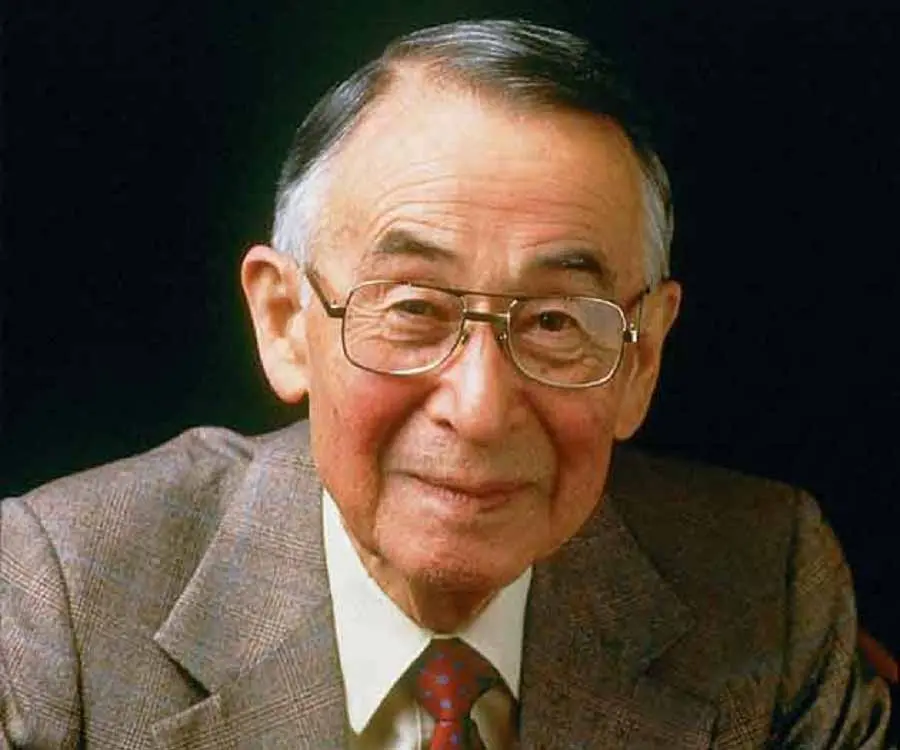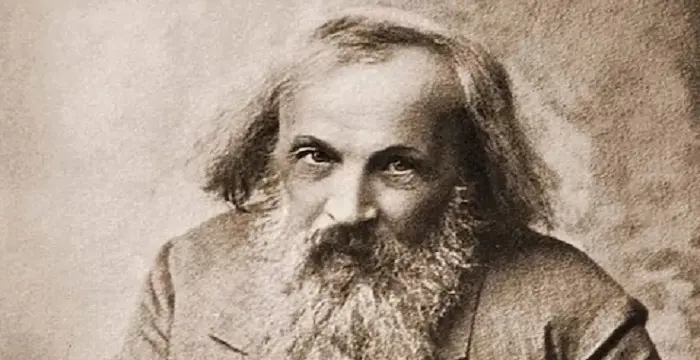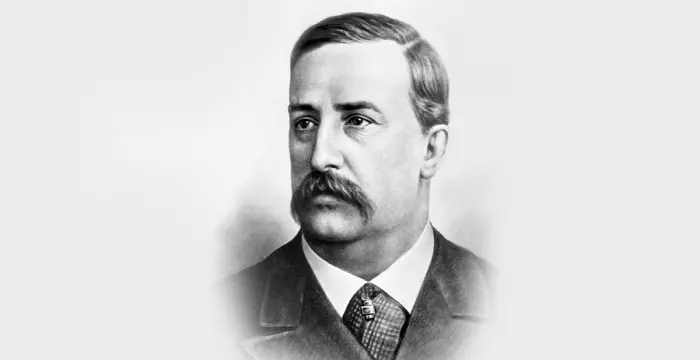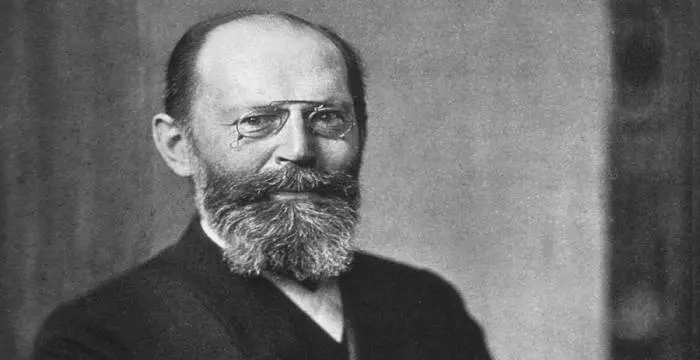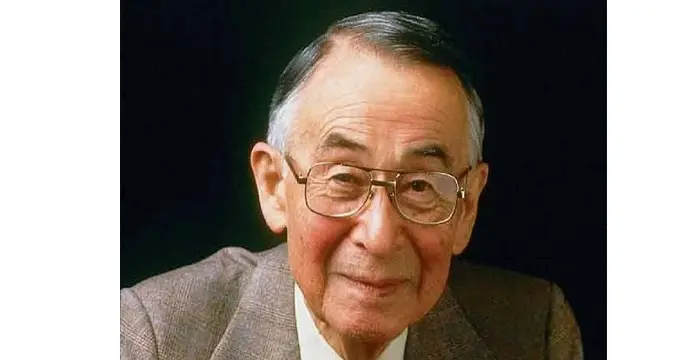
Charles J Pedersen - Chemists, Career and Family
Charles J Pedersen's Personal Details
Charles J Pedersen was an American chemist who discovered the chemical compound, crown ethers
| Information | Detail |
|---|---|
| Birthday | October 3, 1904 |
| Died on | October 26, 1989 |
| Nationality | American |
| Famous | Scientists, Chemists, Organic Chemists |
| Spouses | Susan Ault |
| Birth Place | Busan, South Korea |
| Gender | Male |
| Father | Breder Pedersen |
| Mother | Takino Yasui |
| Sun Sign | Libra |
| Born in | Busan, South Korea |
| Famous as | Organic Chemist |
| Died at Age | 85 |
// Famous Chemists
Henry Cavendish
Henry Cavendish was a theoretical chemist and physicist, renowned for discovery of hydrogen and calculation of the mass of earth. To know more about his childhood, profile, timeline and career read on
Walter Kohn
Nobel Laureate Walter Kohn was an Austrian-born American theoretical chemist and physicist. Check out this biography to know about his childhood, life, achievements, works & timeline.
Jabir Ibn Hayyan
Jabir Ibn Hayyan was a medieval era polymath. Check out this biography to know about his life, works and achievements.
Charles J Pedersen's photo
Who is Charles J Pedersen?
Charles J Pedersen was an American organic chemist who did path-breaking work in describing methods of synthesizing crown ethers. For the same, he was awarded the Nobel Prize in Chemistry in 1987, which he shared with Donald J Cram and Jean Marie Lehn, the duo who took his work forward. Pedersen was the first DuPont scientist to won the Nobel Prize and also amongst the handful scientists who were bestowed with the award despite having no doctorate degree. Pedersen’s career as a scientist began when he studied chemical engineering at the University of Dayton in Ohio. He then completed his master’s degree from Massachusetts Institute of Technology. Though a bright student, Pedersen did not want to be supported by his father and thus dropped further studies to work. He found employment at DuPont Company, where he remained till his retirement. Unlike other scientists who usually reach the high point of their career mid-30s or early 40s, Pedersen’s magnum opus came after the age of 60. He was studying the effects of bi- and multidentate phenolic ligands on the catalytic properties of the vanadyl group, VO when he accidentally found unknown crystals of a by-product. Fascinated by the same, he studied further, little knowing that it would lead to a new chapter in chemistry. He discovered crown ethers, a molecule containing hydrogen, carbon and oxygen atoms. It was for this discovery that he was awarded the Nobel Prize.
// Famous Organic Chemists
Dmitri Mendeleev
Dmitri Mendeleev was a Russian chemist who is best known for his discovery of the periodic law. Check out this biography to know about his childhood, life, achievements, works & timeline
Aleksandr Borodin
Aleksandr Borodin was a prodigal Russian music composer and scientist. This biography gives detailed information about his childhood, life, works, achievements and timeline.
Hermann Emil Fischer
Emil Fischer was a Nobel Prize winning chemist from Germany who is known for inventing the ‘Fischer Projection’ method. To know more about his childhood, career, profile and timeline read on
Childhood & Early Life
Charles J Pedersen was born on October 3, 1904, in Busan on the coast of south eastern Korea, to Breder Pedersen and Takino Yasui. His father was a Norwegian while his mother was Japanese.
At the age of eight, young Pedersen along with his family shifted to Nagasaki, Japan. Therein, he enrolled at a convent school. Two years later, he moved to Yokohama where he enrolled at an international school, St Joseph College.
Upon completing his early studies, Pedersen moved to United States where he studied chemical engineering at the University of Dayton in Ohio. He gained his Bachelor’s degree from the University of Dayton.
Following his bachelor’s degree, Pedersen gained admission at the Massachusetts Institute of Technology. From there, he received a master’s degree in organic chemistry. Despite being coaxed by his professor James F Norris, Pedersen did not pursue a doctorate degree and instead started a career because he did not want to remain a burden on his father anymore.
Career
In 1927, Pedersen was employed by DuPont Company in Wilmington, Delaware upon the recommendation of his professor Norris. At DuPont, Pedersen was directed to research at the Chambers Work’s Jackson Laboratory by William S Calcott. He remained at DuPont for his entire 42 years career as a chemist, 32 years at Jackson Laboratory and last 10 years at the Experimental Station.
During his initial days as a scientist, Pedersen was asked to work on a series of typical problems. His earliest accomplishment was an improvement in the making of tetraethyl lead. The discovery had great commercial impact attached to it.
Later, he began to search for oil-solvable precipitants for copper. It was while working on the project that he found the first good metal deactivator for petroleum products, gasoline, oils and rubber.
It was following his discovery of the metal deactivator that Pedersen developed a great interest in the effects of various ligands on the catalytic properties of copper and the transition elements. As such, he continued to work in the field for several years.
Following his work on the catalytic properties of copper, he next found his interest in the oxidative degradation of the substrates that he was working on, such as petroleum products and rubber
By 1940, he had established his career as a chemist, excelling in the field of antioxidants. It was due to his scientific abilities and his know-how of the subject that he was appointed as a research associate in DuPont. It was the highest title that a DuPont researcher could obtain then. The post gave him the ability to choose his own projects.
In the late 1940s and early 1950s, Pedersen’s scientific interest became varied. He became interested in the photochemistry of some new phthalocyanine adducts and of quinoneimine dioxides. He developed polymerization initiators and also made some novel polymers.
In 1957, when Organic Chemicals Department at DuPont divided between two departments, Elastomers and Orchem, Pedersen chose the former. Thus, he worked at the Experimental Station where the Elastomers Department was based for the next ten years.
After a short stint of investigation in hydrocarbon polymers, in 1960, Pedersen returned to investigations in coordination chemistry. He studied the effects of bi- and multidentate phenolic ligands on the catalytic properties of the vanadyl group, VO.
It was while studying the complexes of vanadyl ion VO that one of the experiments led to the formation of an unexpected small quantity of unknown white crystals. Intrigued by the by-product, he studied it later identifying it as dibenzo18-crown-6, first crown ether.
He dedicated the last nine years of his life in the study of crown ethers, an unexplored region of chemistry. In 1967, he published two works which have become classics today. Through the work, he described the methods of synthesizing crown ethers (cyclic polyethers). The donut shaped molecules were the first in the series of extraordinary compounds that formed stable structures with alkali metal ions.
He retired from DuPont in 1969. Post retirement, he took a break from science to indulge in various hobbies including gardening, fishing, poetry and so on.
Major Works
The high point in Pedersen’s career came in 1960s when he discovered crown ethers, a family of ring-shaped molecules that have the ability to bind certain metallic atoms in the middle of the ring. Consequently, the metallic atoms could be released in organic compounds to incite a chemical reaction. Prior to the discovery of crown ethers, the possibility for bringing about chemical reactions in laboratories and creating chemical compounds by releasing metallic atoms in organic compounds was impractical.
Awards & Achievements
In 1987, Pedersen was felicitated with the Nobel Prize in Chemistry for his work on the development and use of molecules with structure specific interactions of high sensitivity. He shared the prize with Donald Cram and Jean-Marie Lehn who expanded upon his original discoveries.
He also received a medal of excellence by the DuPont Company.
Personal Life & Legacy
Charles J. Pedersen tied the nuptial knot with Susan Ault in late 1940s. The couple settled in the town of Salem, New Jersey.
In 1983, he was diagnosed with myeloma. The condition left him increasingly frail and weak. He breathed his last on October 26, 1989 in Salem, New Jersey.
Trivia
Pedersen was one of the few people who were felicitated with a Nobel Prize in the science without having a Ph.D.
// Famous Scientists
Juliane Koepcke
Juliane Koepcke is a German-Peruvian biologist, who was the lone survivor among the 92 passengers and crew of the ill-fated LANSA Flight 508 that crashed in the Peruvian rainforest on 24 December 1971. Know more about her life in this biography.
Henry Cavendish
Henry Cavendish was a theoretical chemist and physicist, renowned for discovery of hydrogen and calculation of the mass of earth. To know more about his childhood, profile, timeline and career read on
Konstantin Tsiolkovsky
Konstantin Tsiolkovsky was a Russian rocket scientist and a pioneer of astronautics. This biography provides detailed information about his childhood, family, personal life, career, achievements, etc.
Charles J Pedersen's awards
| Year | Name | Award |
|---|---|---|
Other | ||
| 0 | Nobel Prize in Chemistry - 1987 | |
Charles J Pedersen biography timelines
- // 3rd Oct 1904Charles J Pedersen was born on October 3, 1904, in Busan on the coast of south eastern Korea, to Breder Pedersen and Takino Yasui. His father was a Norwegian while his mother was Japanese.
- // 1927In 1927, Pedersen was employed by DuPont Company in Wilmington, Delaware upon the recommendation of his professor Norris. At DuPont, Pedersen was directed to research at the Chambers Work’s Jackson Laboratory by William S Calcott. He remained at DuPont for his entire 42 years career as a chemist, 32 years at Jackson Laboratory and last 10 years at the Experimental Station.
- // 1940By 1940, he had established his career as a chemist, excelling in the field of antioxidants. It was due to his scientific abilities and his know-how of the subject that he was appointed as a research associate in DuPont. It was the highest title that a DuPont researcher could obtain then. The post gave him the ability to choose his own projects.
- // 1957In 1957, when Organic Chemicals Department at DuPont divided between two departments, Elastomers and Orchem, Pedersen chose the former. Thus, he worked at the Experimental Station where the Elastomers Department was based for the next ten years.
- // 1960After a short stint of investigation in hydrocarbon polymers, in 1960, Pedersen returned to investigations in coordination chemistry. He studied the effects of bi- and multidentate phenolic ligands on the catalytic properties of the vanadyl group, VO.
- // 1967He dedicated the last nine years of his life in the study of crown ethers, an unexplored region of chemistry. In 1967, he published two works which have become classics today. Through the work, he described the methods of synthesizing crown ethers (cyclic polyethers). The donut shaped molecules were the first in the series of extraordinary compounds that formed stable structures with alkali metal ions.
- // 1969He retired from DuPont in 1969. Post retirement, he took a break from science to indulge in various hobbies including gardening, fishing, poetry and so on.
- // 1983 To 26th Oct 1989In 1983, he was diagnosed with myeloma. The condition left him increasingly frail and weak. He breathed his last on October 26, 1989 in Salem, New Jersey.
- // 1987In 1987, Pedersen was felicitated with the Nobel Prize in Chemistry for his work on the development and use of molecules with structure specific interactions of high sensitivity. He shared the prize with Donald Cram and Jean-Marie Lehn who expanded upon his original discoveries.
// Famous Libra Celebrities peoples
Melissa Brim
Melissa Brim is the ex-girlfriend of former professional boxer Floyd Mayweather Jr. Check out this biography to know about her birthday, childhood, family life, achievements and fun facts about her.
Jacob Tremblay
Jacob Tremblay is a Canadian child actor. Let’s have a look at his family & personal life including age, birthday, relationships, net worth and fun facts.
Sierra Furtado
Check out all that you wanted to know about Sierra Furtado, the famous YouTube Personality; her birthday, her family and personal life, her boyfriend, fun trivia facts and more.
Sexxy Lexxy
Alexis Smith Walker, popularly known as Sexxy Lexxy, is an African-American singer. Check out this biography to know about her birthday, childhood, family life, achievements, and fun facts about her.
Benjamin Keough
Benjamin Keough is an American socialite who is best known as the grandson and look-alike of legendary musician Elvis Presley.
Lizzie LDShadowLady
Check out all that you wanted to know about Lizzie LDShadowLady, the famous YouTuber and gamer; her birthday, her family and personal life, her boyfriend, fun trivia facts and more.
Charles J Pedersen's FAQ
What is Charles J Pedersen birthday?
Charles J Pedersen was born at 1904-10-03
When was Charles J Pedersen died?
Charles J Pedersen was died at 1989-10-26
Where was Charles J Pedersen died?
Charles J Pedersen was died in Salem, New Jersey
Which age was Charles J Pedersen died?
Charles J Pedersen was died at age 85
Where is Charles J Pedersen's birth place?
Charles J Pedersen was born in Busan, South Korea
What is Charles J Pedersen nationalities?
Charles J Pedersen's nationalities is American
Who is Charles J Pedersen spouses?
Charles J Pedersen's spouses is Susan Ault
Who is Charles J Pedersen's father?
Charles J Pedersen's father is Breder Pedersen
Who is Charles J Pedersen's mother?
Charles J Pedersen's mother is Takino Yasui
What is Charles J Pedersen's sun sign?
Charles J Pedersen is Libra
How famous is Charles J Pedersen?
Charles J Pedersen is famouse as Organic Chemist



